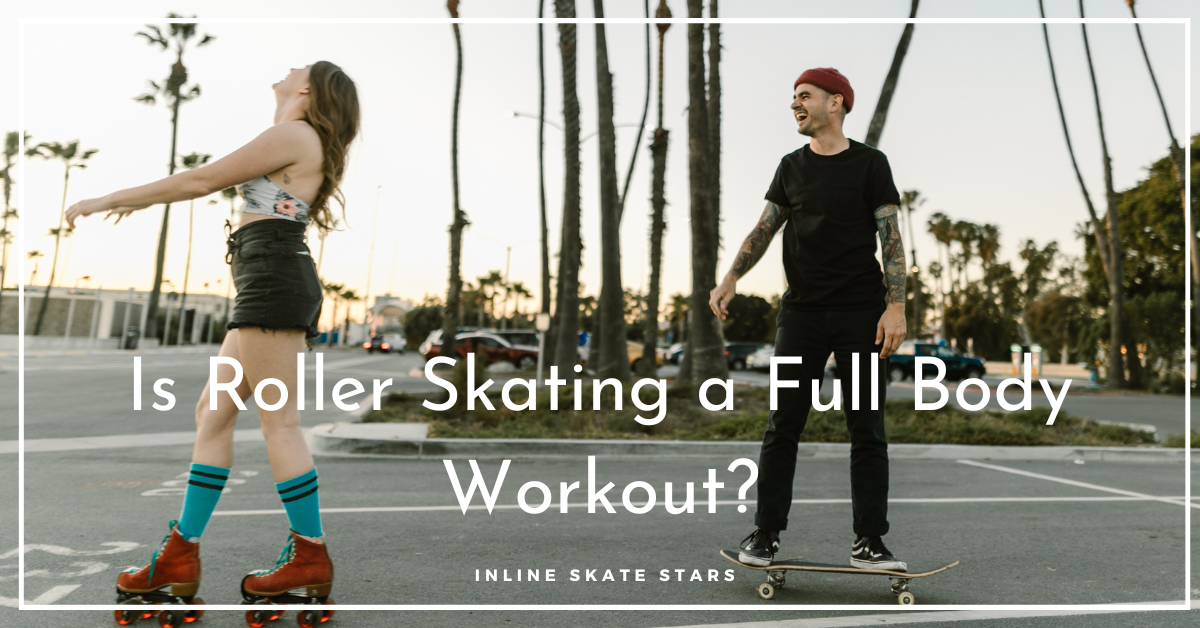Is roller skating a full body workout? You’re probably looking for a killer exercise to incorporate into your weight loss workout?
Roller skating is your best bet. It’s a low-impact aerobic exercise and easy on the joints. It is fun and thrilling, and works out 90% of your body muscles?
Roller skating is one of the most strength-building and cardio workouts. It is a full-body killer exercise with tons of health benefits.
It improves leg coordination movements and overall body balance. It also helps burn your body’s calories and promotes a healthy heart. It’s good for mental health.
And the best part, you don’t need to have access to a gym, you need your pair of skates, and you’re good to go!
Is Roller Skating a full body workout?
The short answer! Is roller skating a full body workout? Roller skating is a vigor exercise that activates almost all body muscles. It engages and activates your upper and lower body muscles, such as quads, glutes, hamstrings, and calves. It helps improve your body strength, balance, and core stability and promotes a healthy heart and mind.
Roller Skating Muscles Worked
Roller skating works out the upper and lower body muscles. The primary muscles targeted are the glutes, hamstrings, quads, and calves. It also targets the shoulders, core, chest, and lower back muscles.
1. GLUTES
The glutes are also referred to as the buttocks or hips. They emerge from the ilium and sacrum and enter the femur.
Glute strength improves athletic performance. You use your glutes to propel yourself forward when roller skating, especially when performing pumps.
The glute muscles support your upright posture and propel you forward. Strong glutes aid in pelvic alignment and momentum during roller skating.
They also support the lower back and prevent injuries while roller skating.
The glutes are your body’s longest and strongest muscles. They are composed of three muscles: the gluteus maximus, the gluteus medius, and the gluteus minimus.
Gluteus Maximus
The buttock muscles are the largest and most visible region of the buttocks. They account for about 16% of the overall cross-section of the hip joint.
Gluteus Medius
The fan-shaped muscle is found on the lateral aspect of the upper buttock, the side of your hip, and beneath the gluteus maximus.
Gluteus Minimus
The muscle is the smallest of the three and is found right behind the gluteus medius.
2. HAMSTRINGS
Hamstrings are skeletal muscles located behind your thighs. The muscles contribute to your movements, such as walking, performing squats, and other leg movements.
They are also responsible for your body’s flexibility and help reduce the risk of injuries. The hamstring helps to maintain excellent posture and contributes to overall leg strength.
Strong hamstrings contribute to the smooth functioning of your knees, legs, hips, and back.
When roller skating, the hamstrings are activated. They become tight and contract at the top, stretching to help you push back up.
3. QUADRICEPS
They are also known as the quads, a set of muscles found at the front of your thighs. The quadriceps muscle aids in hip flexion and extension at the knee.
Quadriceps help to perform powerful lower body movements and propulsion and are essential for knee stabilization. They help in reducing knee injury risks.
The muscles help in easing everyday movements and help in your athletic performance.
In roller skating, the muscles help to flex your hips and extend your knee joint to enable you to move forward.
They also help in roller skating fast since they generate powerful lower body movements.
4. CALVES
The calf muscle is located on the back of your lower leg and starts just below your knees, extending to your ankle.
The muscles aid in helping you stand straight, enabling you to run, walk, jump and flex your feet.
The calves are the muscles that help you jump. Strong calves help increase your running speed, and you can run for a long time.
In roller skating, calves contribute to your skating speed and help you perform tricks like spinning, back skating, and one-foot skating.
5. TRAPEZIUS
Trapezius muscles are found on your shoulders with a trapezoid shape that extends from the neck to the lower back.
The muscle is responsible for your upright posture and helps stabilize your spine.
The muscles enable your neck, head, arms, shoulders, and torso movements. A strong trapezius stabilizes and increases your spine strength and improves your posture.
When roller skating, you use your trapezius to move your neck, head, arms, shoulder, and torso.
The muscle helps you reach, assume a squat position, and bend when skating.
6. DELTOIDS
Deltoids are shoulder muscles. They are a ball and socket joint connecting your arm to the body trunk.
The muscle is responsible for moving your arms in different directions while protecting and stabilizing your shoulders.
The muscles help you to press with your shoulders, chest, and arms. In roller skating, you use the deltoid to stabilize your shoulder and raise your chest.
7. UPPER CHEST
The upper chest is the top part of your pecs. The muscles originate from the collar bone extending diagonally to attach to the upper arm bone.
The upper chest muscles help stabilize your shoulder muscles and promote better breathing.
Upper chest muscle exercise improves posture by strengthening and extending the chest.
Because your pecs are linked to your ribcage, this helps promote deeper breathing. As a result, with every breath, your chest expands.
In roller skating, your upper chest muscles help control your breathing and help you maintain a smooth breathing pattern.
8. ERECTOR SPINAE
Erector spinae are a group of muscles and tendons along the length of your spine. The muscles promote a straight back and side-to-side rotation.
They enable the spine to flex, extend, and rotate.
The erector spinae offers first-line protection to your spine. In roller skating, the muscles provide strength to perform skating movements.
It also allows you to make explosive moves when performing tricks or skating fast.
9. ABDOMINALS MUSCLES
They are straight paired muscles that run along the front of the abdomen and are also known as the abs. The abs help with breathing, especially when you’re breathing heavily.
Internal organs are also kept intact by the muscles. Roller skating helps you engage your core, which allows you to burn fat and achieve a smaller waistline.
The abs also help you breathe better and increase your skating performance.
Is Roller Skating a Full Body Workout? | Final Thoughts
Is roller skating a full body workout? Roller skating engages practically all of your body’s muscles and increases muscle strength. Roller skating activities are an excellent weight-loss workout.
Other advantages of roller skating include a healthy heart and mind, leg coordination, balance, and body flexibility.
In a nutshell, roller skating engages and activates the following muscles;
- Glutes
- Hamstrings
- Quadriceps
- Calves
- Trapezius
- Deltoids
- Upper Chest
- Erector Spinae
- Abdominal Muscles
That’s it! I hope you found this guide helpful



